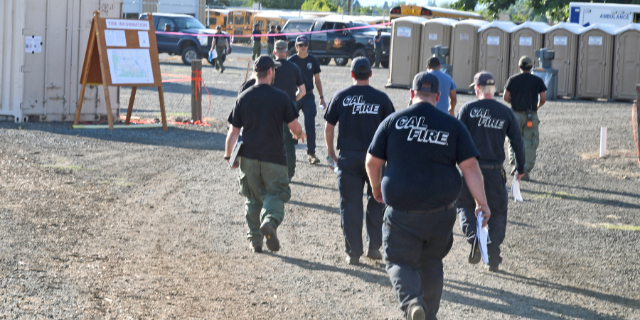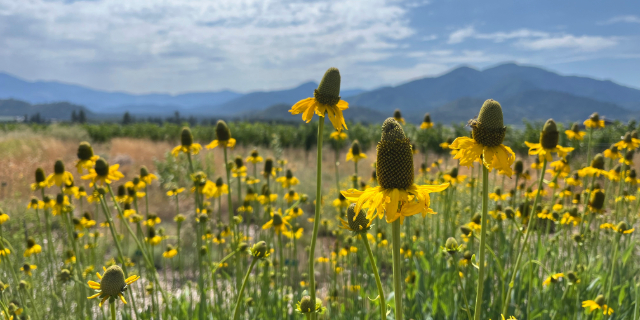GARDEN PLOTS: You can tell a lot about gardeners from the stye of their gardens
Published 7:00 am Wednesday, December 6, 2023

- Rhonda Nowak
“A garden is an expression of Man in a state of Society.”
Trending
— Nan Fairbrother, “Men and Gardens,” 1956
English author Nan Fairbrother (1913-1971) tells us on the cover that her second book is “a delightful tour through gardens and garden writing of the past.” And so it is, with an emphasis on the gardens and garden literature imagined and created by men, beginning with the monastic gardens of the Dark Ages, continuing on to the romantic gardens of the Middle Ages, then the fantastical gardens of Tudor England, and finally to the landscape gardens of the seventeenth and eighteenth centuries.
Curiously, Fairbrother’s book stops short of the Victorian era’s informal herbaceous gardens and tapestries of carpet bedding. She clears up the mystery early on when she says, “[W]e have created no fine gardens since [the eighteenth century], nor are we likely to unless we set aside our present preoccupation with the plants rather than the garden.”
Trending
Apparently, Fairbrother was not an enthusiast of cottage gardens.
At any rate, she groups English garden-making through the ages into three wide-ranging categories: enclosed gardens, formal gardens and landscape gardens. I would argue that American garden-making has more or less followed English fashions.
Hortus conclusus, Latin for enclosed gardens, were originally the province of Christian monks, and they remained the norm for garden design up to the seventeenth century. Formal gardens were popularized in the late seventeenth century by French landscape designer André Le Nôtre (1613-1700), whose pinnacle of achievement – the garden at Versailles – was commissioned by Louis XIV in 1661. On the other hand, Fairbrother says landscape gardens are a decidedly English style. One of its most prominent figures was Lancelot “Capability” Brown (1716-1783), whose masterpiece was the parkland at Blenheim Palace in Oxfordshire.
As I was reading the chapter “Why Men Have Gardened,” I came across the quote that begins this column. Fairbrother at times neglects to reference her direct quotes, as if we should all know the exalted remarks of historical garden figures by heart. In this case, however, she blames the unnamed writer for not sufficiently detailing how “a garden is an expression of Man in a state of Society” and then goes on to provide the particulars herself.
Her sources are the garden books of different periods, which “besides telling us how to turn our patch of earth into a garden, they are also expressing the way their age looks at the world, the state of their society.”
So the high walls and impenetrable hedges of a Medieval enclosed garden were expressions of men’s fear of violence and longing for peace in a society where violence was common and peace unreliable. In contrast, the wide-open spaces and orderly layout of formal Renaissance gardens like Versailles were representations of a society that felt confident in its power to dominate the surrounding landscape by man’s intellectual might. Eighteenth-century landscape gardens were created from a society that had grown weary of reason and order, “which drove men, since we are perverse creatures and never satisfied, to a self-conscious return to Nature and the Simple Life.”
If we carry Fairbrother’s theory to post-World War II America, we can see how our neat patches of open green lawns were manifestations of an optimistic society that believed the sky was the limit. We had our white picket fences, but they were only high enough for neighbors to lean across to share gardening tips.
Fast forward 75 years to today, when neighbors in our politically fractured society don’t speak to each other because they could be a “damn liberal” or “crazy MAGA.” Two-thirds of Americans stay home more now than before the COVID-19 pandemic. We don’t feel as safe venturing into a society in which 627 mass shootings and more than 32,000 gun-related deaths have occurred so far just this year. Is it any wonder, then, that we’ve replaced our picket fences with 6-foot-tall cedar barricades and our open lawns with privacy hedges?
At the same time American citizens are blaming each other for losing their moral compass, we all share the loss of our wildlands through deforestation and wildfires (68,988 wildfires were recorded in the U.S. during 2022 with 7.58 million acres burned), as well as the loss of our wildlife from human development, pollution and disease (more than 1 million animal species worldwide are currently at risk of extinction). It makes sense that the present trend of turning our yards into habitats for native flora and fauna stems from society’s fear of losing more of these precious resources.
Of course, gardens are not just representations of a society at large but are also created from the individualistic tastes of the gardener.
When I walk around my neighborhood, I see (or don’t see) enclosed gardens behind fences and walls, formal gardens with clipped boxwood hedges, landscape gardens with sweeping green lawns and shrubbery, cottage gardens with a chaotic proliferation of flowers, and native plant gardens that radiate pollinator friendliness.
My own garden, I realize, has elements of each of these in a style that might best be described as ambivalent. To make up for this lack of decisiveness in my garden style, I’ve planted a sign in front of my 8-foot-tall photinia hedge that proclaims my political views in no uncertain terms. I see this sign as a heads-up to my neighbors so they can ask me for gardening tips with their eyes wide open.









